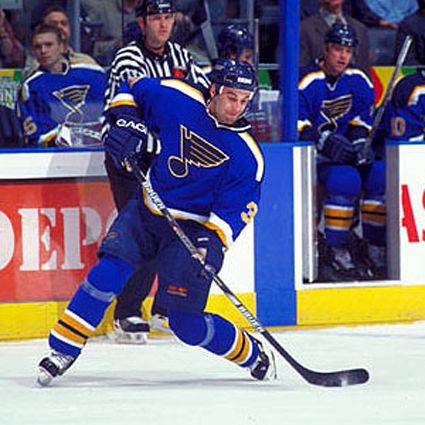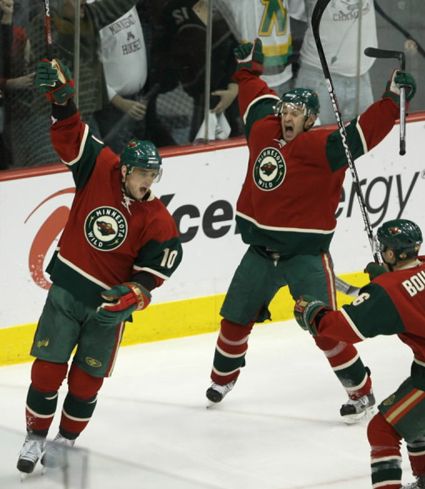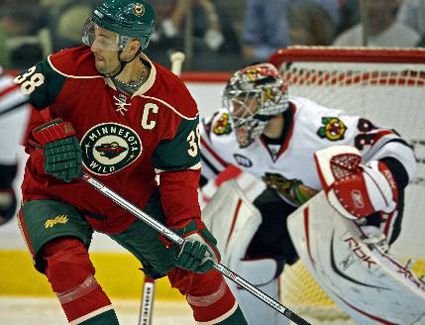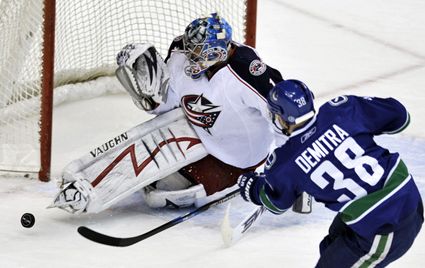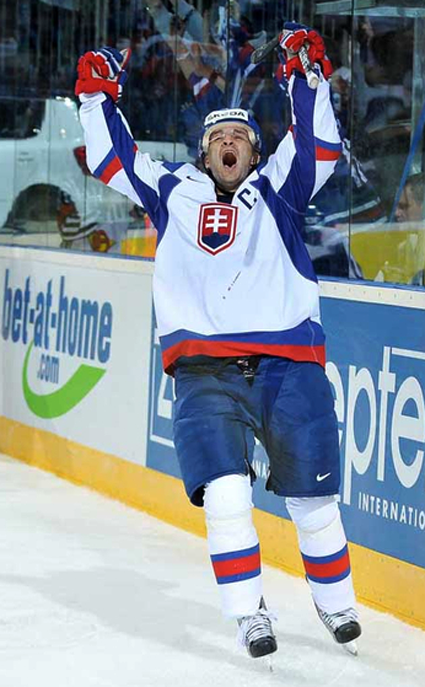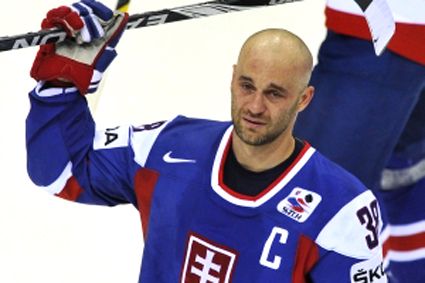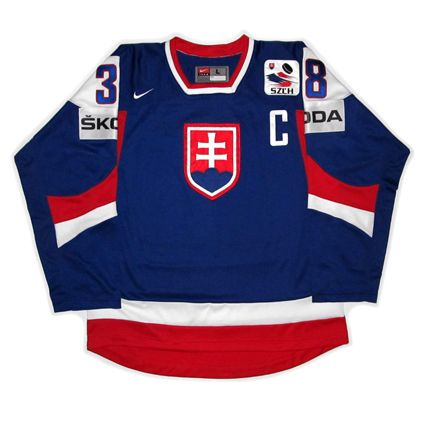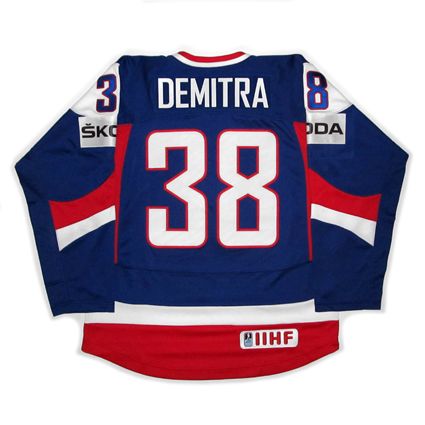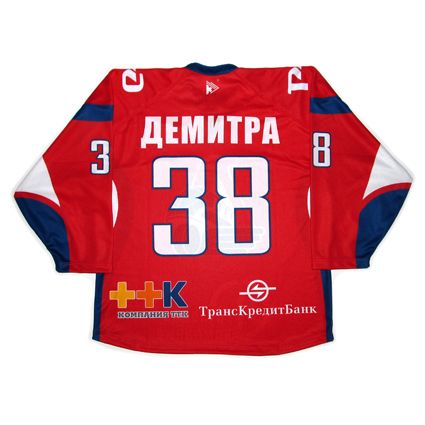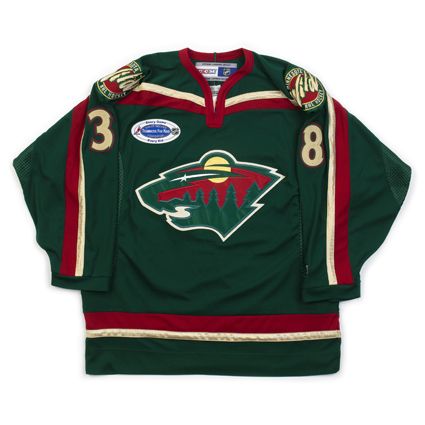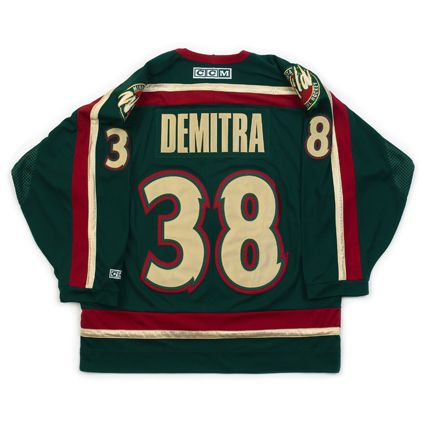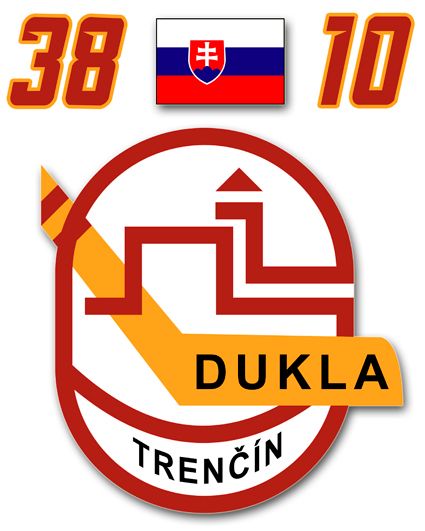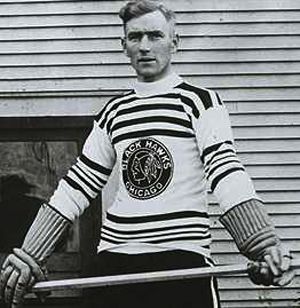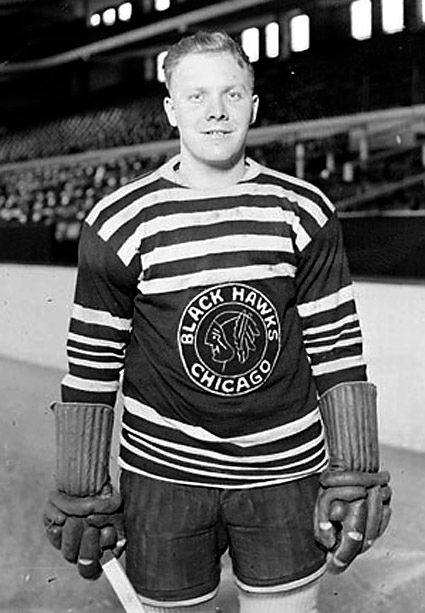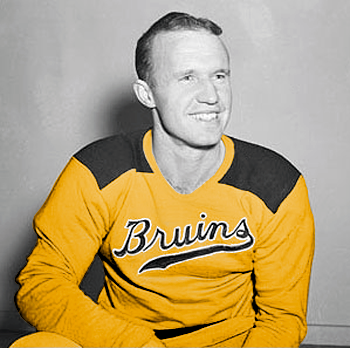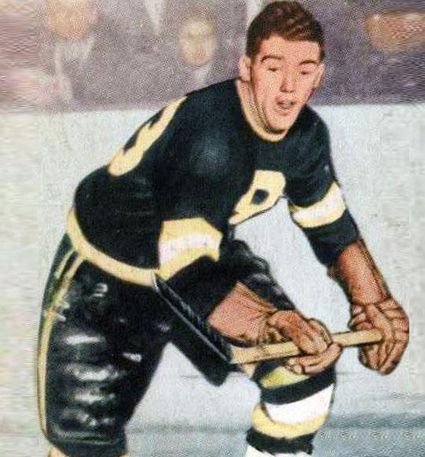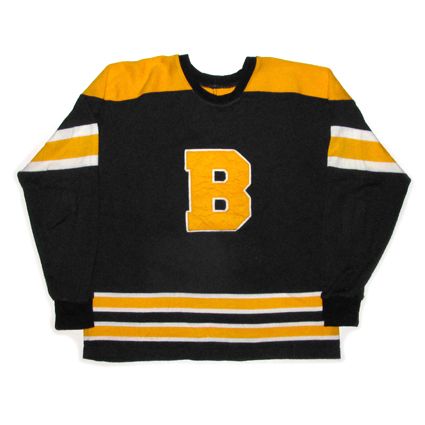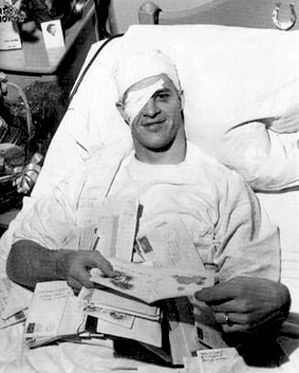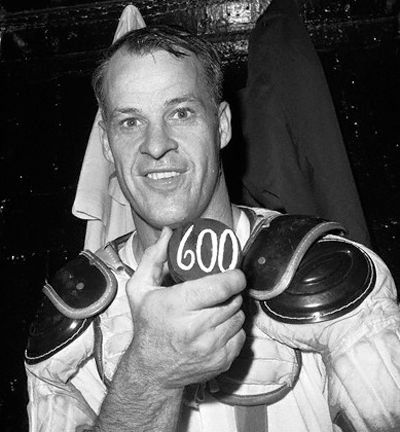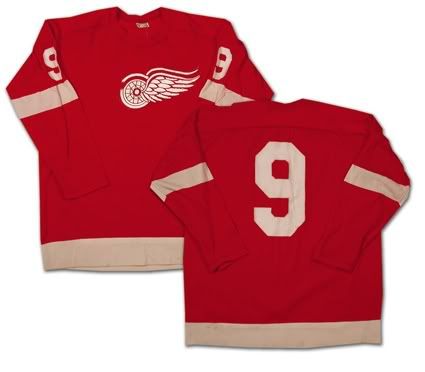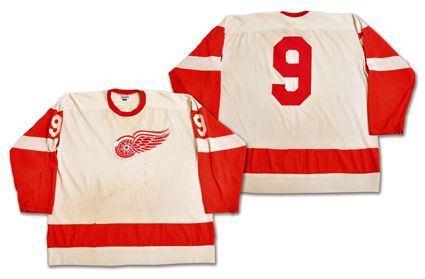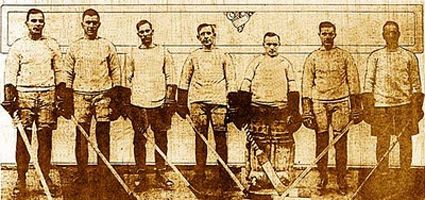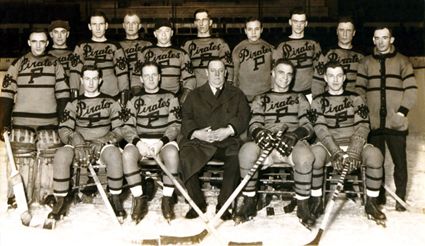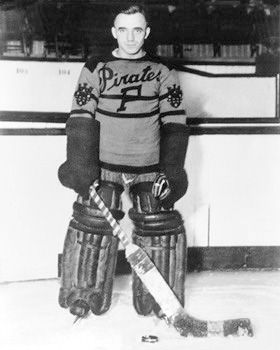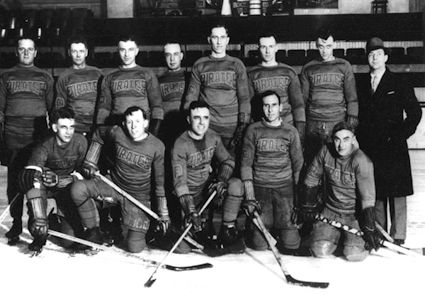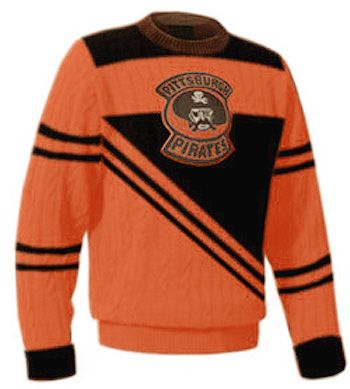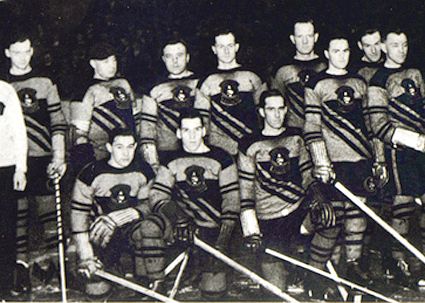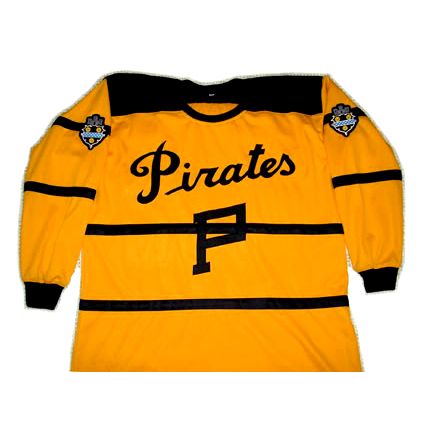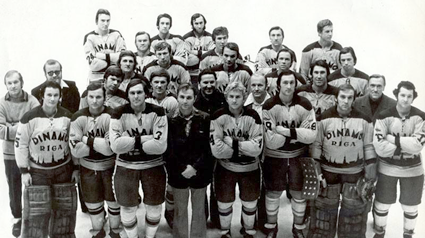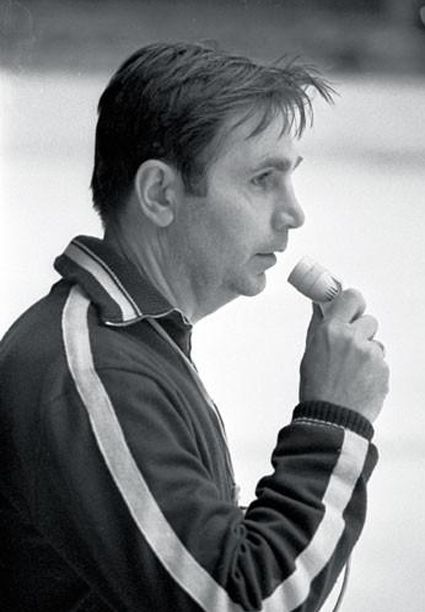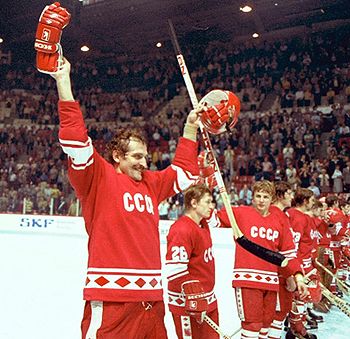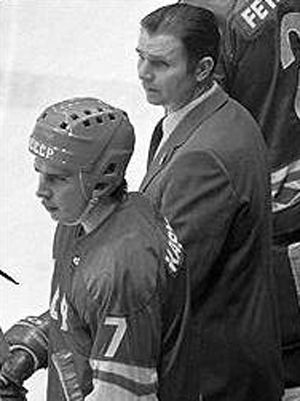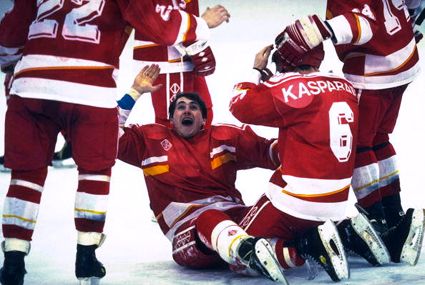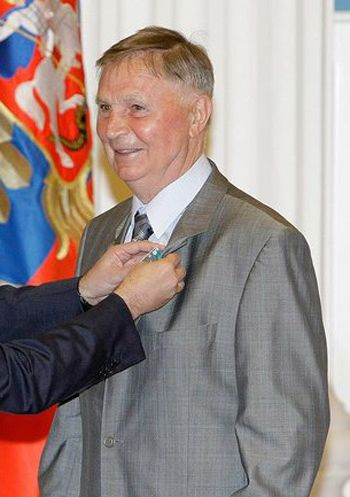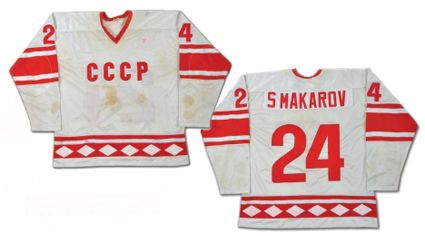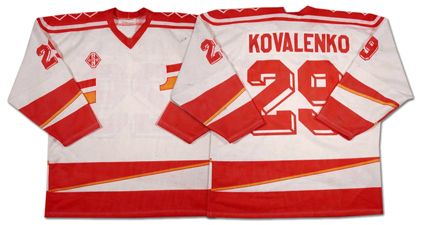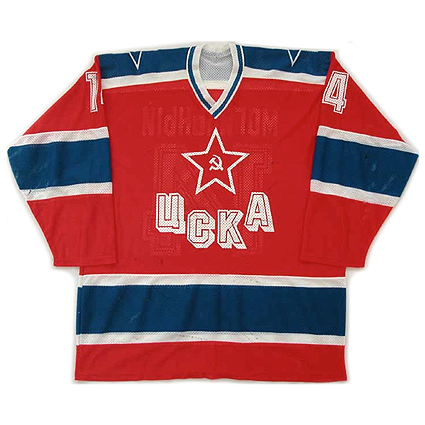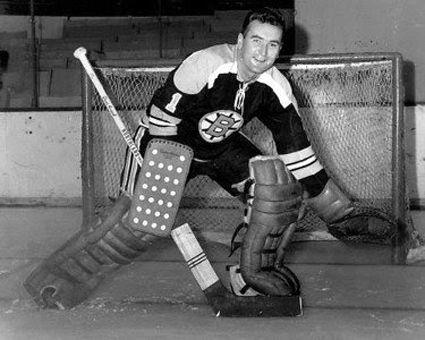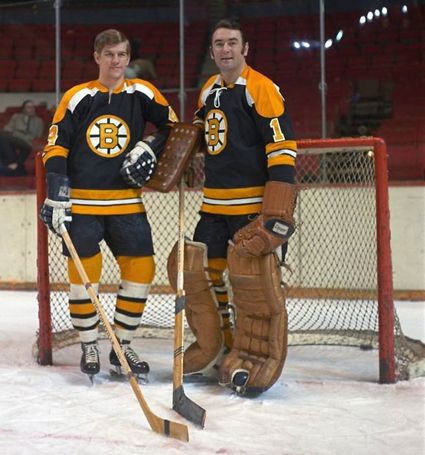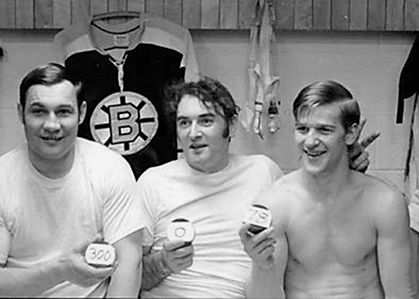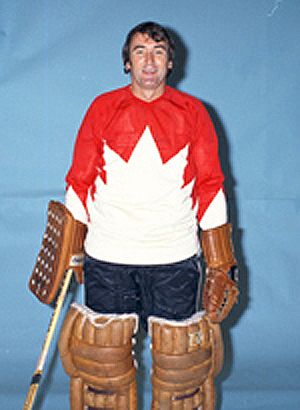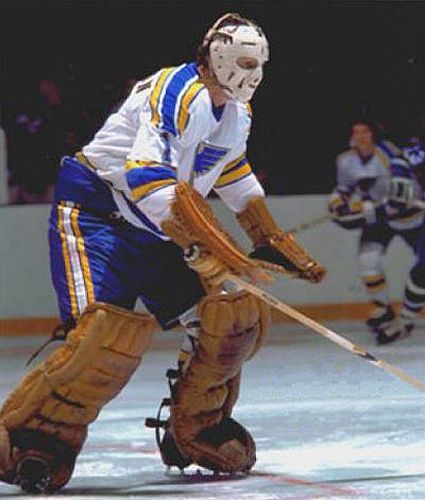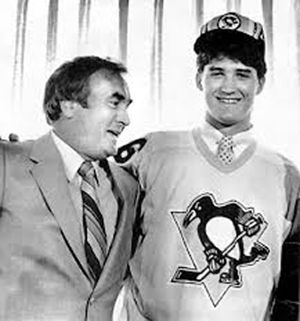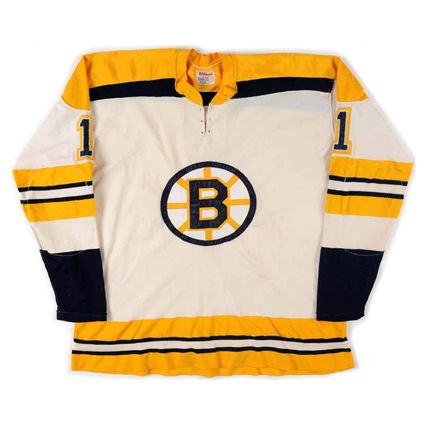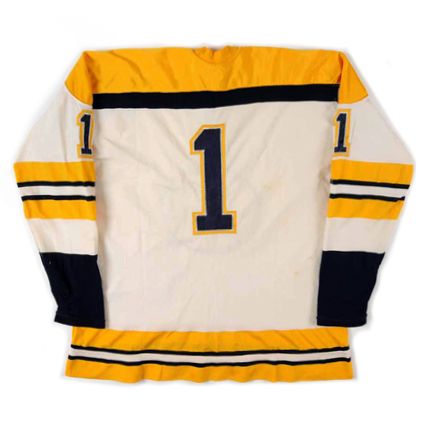After playing junior hockey for the Montreal Jr. Royals, Trois-Rivieres Reds and Montreal Jr. Canadiens from 1953-54 to 1955-56, goaltender
Eddie Johnston spent the next few seasons honing his craft as he worked his way up the ladder with stops with the Winnipeg Warriors of the WHL in 1956-57, the Shawinigan Cataracts of the QHL in 1957-58, the Edmonton Flyers back in the WHL in 1958-59, the Johnstown Jets of the EHL in 1959-60, the Hull-Ottawa Canadiens of the EPHL in 1960-61 where he posted a 41-20-9 record and finally the Spokane Comets again in the WHL in 1961-62 where Johnston racked up another 37 wins to show he was now ready for the NHL.
Eddie Johnston of the Johnstown Jets in 1959-60
That move came for the 1962-63 season when Johnston, born on this date in 1935, claimed one of the rare and coveted spots as a goaltender in the six team NHL. Unfortunately, the Bruins were in the throws of a down period. Starting in 1960-61, Boston would win just 15 games out of a 70 game schedule the two seasons prior to Johnston's arrival. The low point proved to be his rookie season with just 14 wins (11 of those for Johnston) followed by a mere 18 as a team in 1963-64 with Johnston getting all 18 as he played every one of the 70 games for the Bruins, the last goalie to play in every one of his team's games, as was the norm at one time.
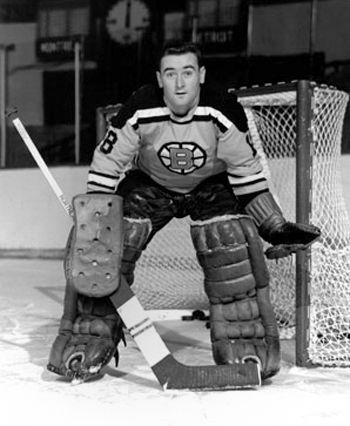
Eddie Johnston, the last goalie to play every one of his team's games
After splitting time with Jack Norris in 1964-65, rookie Bernie Parent arrived in Boston for 1965-66 and took the majority of the games with 39, as well as the arrival of another NHL debutant, Gerry Cheevers, who was in the nets for 7 games. Johnston was in goal for 10 of the Bruins 21 wins in 33 appearances.
Johnston once more was the lead goaltender in 1966-67 with 34 games played, ahead of Cheevers 22 and Parent's 16, but the Bruins were once again the league's doormats with just 17 wins from 70 games, missing out on the playoffs for the eighth straight season, a dismal effort considering four of the league's six teams made the playoffs each year. But signs of change were in the air in Boston, as 1966-67 saw the arrival of game changer Bobby Orr, who caused Johnston to become one of the last goalies to wear a facemask after hitting him in the face with a shot during warmups.
The arrival of Bobby Orr started a new era for Johnston and the Bruins
In a blockbuster trade prior to the 1967-68 season, the Bruins dealt Gilles Marotte, Pit Martin, and Norris to the Chicago Black Hawks for Fred Stanfield, Ken Hodge and Phil Esposito, whom immediately led the team in scoring six of the next seven seasons, finishing second to Orr in 1970 and 1975. Armed with this revamped lineup, Johnston's 11 wins in 28 games surpassed his 8 wins in 43 starts from the year before. The Bruins jumped up from 17 wins to 37 and a 40 point rise in the standings, no doubt aided by not only the new additions to the lineup, but also the expansion of the NHL from just six clubs to now 12, which allowed Boston to add to their win totals against the newcomers who were still finding their sea legs in the rocky waters of their first seasons in the NHL.
Johnston raised his win total to 14 but in four less games in 1968-69 as the Bruins continued their ascent up the standings. He also made his long awaited first playoff appearance of his career that season as well.
With the NHL season now up to 76 games, Johnston saw action in 37 games, nearly splitting time evenly with Cheevers, who appeared in 41. Johnston finished the year with a 16-9-11 mark and added another playoff win in two postseason games as the Bruins long march from the depths of the standings was completed with the team's first Stanley Cup championship since 1941.
In a hilarious photo from 1970, Johnny Bucyk poses with goaltender Eddie Johnston and Bobby Orr as they pose with pucks indicating their career goal totals, Bucyk having just reached 300, Johnston still stuck at zero and Orr at 78!
1970-71 saw Johnston set an NHL career high with 30 wins, more than twice the number of wins the Bruins managed as at team in his early years with the club! His final record of 30-6-2 helped Boston to the best overall record in the league that season, but a hard fought first round, 7 game playoff loss to the rival Montreal Canadiens ended the Bruins season early.
 Johnston during his mask wearing era
Johnston during his mask wearing era
In 1971-72, he again split time almost evenly with Cheevers, and in 38 games finished with a 27-8-3 mark as the Bruins once again finished with the league's best record. Unlike in previous seasons however, Johnston and Cheevers split the starts in the playoffs, with Johnston going 6-1 with a shutout in 7 appearances as Boston claimed it's second Stanley Cup in three years.
While he did not see any action in the eight games of the 1972 Summit Series against the Soviet Union, Johnston was a part of the roster and did appear in some of the team's exhibition games.
Johnston wearing the maple leaf of Canada in 1972
Even greater changes to the world of hockey were in store for 1972-73, as Cheevers bolted for the upstart World Hockey Association, leaving the veteran Johnston the clear number one in net for the Bruins. He played in 45 games, going 24-17-1 as three others shared the 38 appearances.
One of the goaltenders who shared those 38 games for the Bruins was the legendary Jacques Plante, whom Boston acquired from the Toronto Maple Leafs for future considerations in 1973, which turned out to be Johnston, who was sent to Toronto after the conclusion of the season, ending his 11 year run in Boston.
After one 12-9-4 season with the Maple Leafs, Johnston was again on the move, this time to the St. Louis Blues in time for the 1974-75 season. There, he capably backed up John Davidson for one season until becoming the Blues primary goaltender for 1975-76, tying for he Blues lead in wins with Yves Belanger with 11. 1976-77 again saw Johnston as the number one, with his 38 starts leading Ed Staniowsk's 29.
Johnston spent several seasons with the Blues
Johnston's carer began to wind down at this point, as five goalies shared time in the crease for St. Louis, with Johnston limited to just 12 games, but a respectable 5-6-1 mark considering the Blues 20-47-13 record. In January of that year, Johnston was sold by the Blues to the Black Hawks, with whom he would play the final four games of his career before retiring at the conclusion of the season at the age of 42.
Johnston would finish his career with 592 games played, 234 wins and 257 losses and 80 ties with a career 3.24 goals against average, a nice recovery when you take into account the first five seasons he spent with the then-lowly Bruins had him at 58-139-11 - a full 81 games under .500, more than a full season's worth of games at the time!
Following his playing days, Johnston became a head coach, first for the New Brunswick Hawks of the AHL in 1978 before returning to the NHL behind the bench of first the Chicago Blackhawks in 1979 before taking over as the head coach of the Pittsburgh Penguins from 1980-81 to 1982-83. He was then the General Manager of the Penguins from 1983 to 1988, which included drafting Hall of Famer Mario Lemieux.
Johnston with his draft pick Mario Lemieux
He then became the GM of the Hartford Whalers from 1989 to 1992. He then returned to Pittsburgh as their head coach from 1993 through the 1996-97 season. He would then remain with the Penguins as an assistant GM and then a senior advisor before retiring in 2009 after the Penguins won the Stanley Cup in his 26th year with the Pittsburgh organization.
Johnston reunited with an old friend in 2009
Today's featured jersey is a 1963-64 Boston Bruins Eddie Johnston jersey as worn the season Johnston was the last goaltender to play every one of his team's games that season, with 70. This style of Bruins sweater was first introduced back in 1949 with less sleeve stripes and two color numbers. This sweater evolved in 1951 with the addition of an additional sleeve stripe and black cuffs.
That style remained in use through 1957-58 when the design again evolved to reach today's featured style, which had narrower sleeve stripes to accommodate numbers on the arms for the first time. The numbers on the back also now became three colors with the addition of white trim around the black numeral, which was then outlined in gold. This jersey configuration lasted through the down period of the 1960's which ended with the arrival of Orr. It was replaced by a similar, but modernized for the time jersey in time for the team's return to prominence which began in 1967-68.

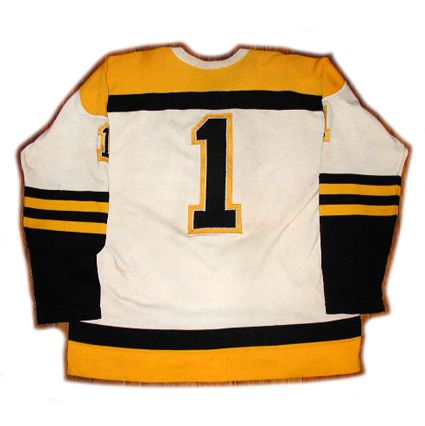
Today's bonus jersey is a 1971-72 Boston Bruins Eddie Johnston jersey as worn the season the Bruins would capture the second Stanley Cup of Johnston's career. This classic Bruins jersey was worn for both Stanley Cup championships. When first introduced in 1967-68 there was no white space in between the black cuffs and gold arm stripes, which was added the following season. This style remained unchanged until 1973-74 when the laces were eliminated followed by a redesign the following year, which eliminated the gold shoulder yoke and it's black trim.
A modernized version of this style, complete with laces, was introduced in 2008 and remains the Bruins primary road jersey to this day. It also managed to duplicate the success of the original jerseys, as the Bruins won the Stanley Cup in 2011, their first since wearing today's bonus jersey in 1972.
Here is a tribute to Johnston from the Penguins that looks back on his entire eareer as well as his management career afterward.

